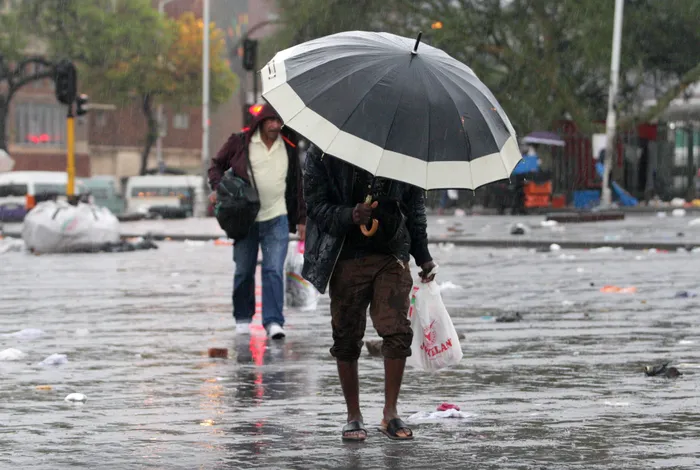Severe Storm warnings issued for multiple South African Provinces amid Spring weather volatility

Heavy rains, thunderstorm in South Africa. Photo Credit- IOL
he South African Weather Service (SAWS) has issued urgent severe storm warnings for parts of Gauteng, the Free State, Limpopo, Mpumalanga, and KwaZulu-Natal, classifying the alerts at Levels 2 and 4 based on anticipated intensity. These warnings, effective immediately, signal the onset of destructive weather conditions as spring brings warmer temperatures and increasingly unpredictable storms. Residents across these regions are advised to prepare for potential disruptions, with coastal and Highveld areas identified as particularly vulnerable.
Level 2 warnings, applicable to broader swathes of the affected provinces, forecast localized damage to infrastructure, property, vehicles, and livestock, alongside disruptions to municipal and essential services. Flooding is expected in low-lying areas, vulnerable roads, and bridges, potentially complicating daily commutes and emergency responses. In contrast, Level 4 alerts, reserved for the most severe scenarios, predict significant flooding in both formal and informal settlements, substantial hail damage, and life-threatening situations from fast-flowing streams. Major travel disruptions, including obstructed or washed-away roads and bridges, are also anticipated under these higher-risk conditions.
The warnings come amid a broader trend of climate-induced weather extremes in South Africa, where storms, floods, and droughts are growing more frequent and intense, according to research published in ScienceDirect. This volatility underscores the challenges of adapting to a changing climate, especially during transitional seasons like spring. SAWS has emphasized the need for heightened vigilance, urging the public to monitor updates via its website and mobile app for real-time developments.
Safety officials have outlined critical precautions to mitigate risks during the storms. Residents are advised against seeking shelter under trees or tall structures, to park vehicles under cover, and to avoid contact with metal objects. Activities such as fishing or golfing should be suspended due to the conductivity risks posed by rods and clubs. In flood-prone areas, individuals must stay indoors, elevate valuables, and steer clear of rivers or streams where water exceeds ankle height. If trapped in a vehicle during flooding, drivers are instructed to abandon it immediately and seek higher ground.
Insurance experts have seized on the alerts to highlight the importance of robust coverage amid rising weather-related threats. Ntabeleng Stamier, Product Systems and Analytics Manager at Old Mutual Insure, warned that such events “not only alter the landscape but also fundamentally reshape the risks South Africans face.” She stressed the need for updated policies, particularly in agriculture, adding, “Outdated policies can leave you dangerously underinsured.” Stamier advocated viewing insurance as a “vital risk-management tool,” recommending a seasonal review to ensure protection against the unpredictable fury of spring storm




